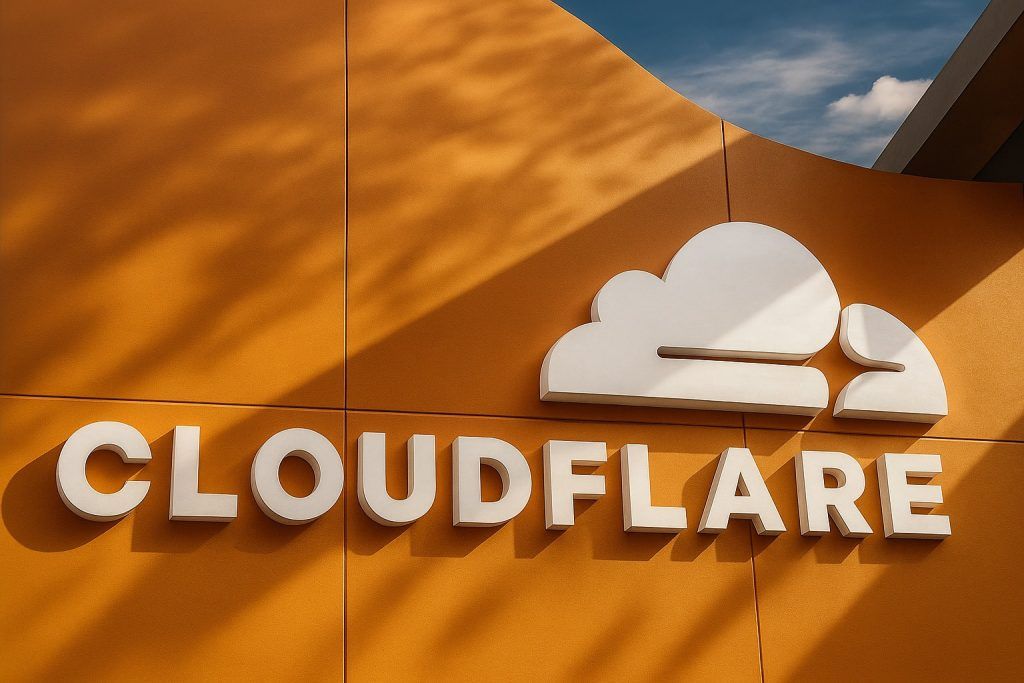- Oct. 31, 2025 price: Meta (NASDAQ: META) closed around $657.87 on Oct. 31, 2025 [1]. The stock had plummeted roughly 11% on Oct. 30 (to ~$666) and fell another ~1.3% on Oct. 31 [2] [3]. Earlier in October META had traded near $752 (flat on Oct. 29), close to its all-time high of ~$789 in August [4].
- Q3 2025 results: Meta reported record Q3 revenue of $51.24 billion (up 26% year-over-year), beating Wall Street forecasts [5]. However, net income plunged 83% to $2.71 billion (EPS $1.05 vs. $6.03 last year) due to a one-time $15.93 billion tax charge under the new “One Big Beautiful Bill” Act [6] [7]. Excluding that tax hit, adjusted EPS would have been ~$7.25 [8].
- Higher expenses ahead: Meta raised its 2025 capex outlook and warned 2026 spending will be “notably larger,” driven by AI investments [9] [10]. The company now expects to spend $70–72 billion on capex this year (vs. a prior $66–72B range) [11], as it builds out new data centers and AI infrastructure.
- AI & product bets: CEO Mark Zuckerberg emphasized Meta’s AI strategy and hardware bets. He noted AI-powered features are boosting engagement (e.g. FB usage +5%, Threads +10% year-over-year) [12]. Meta has launched new products like AI-enabled Ray-Ban smart glasses ($799), which “sold out in almost every store within 48 hours” of release [13]. It also unveiled a $27 billion “Hyperion” AI data center venture with Blue Owl Capital (CFO Susan Li called it “a bold step forward” for Meta’s AI buildout) [14]. Meta is reportedly spending billions to hire AI talent (offering $100M+ signing bonuses) and even acquiring AI-chip maker Rivos for ~$2B [15].
- Legal and regulatory risks: Meta’s business is under growing scrutiny. In April 2025 the EU fined Meta €200 million under the new Digital Markets Act [16], and Meta called the penalties an unfair “tariff” on its business [17]. Now EU regulators say Facebook/Instagram may have violated the Digital Services Act, a finding that could trigger fines up to 6% of revenue (potentially billions of dollars) [18]. In the U.S. the FTC’s antitrust suit over Meta’s acquisitions (Instagram, WhatsApp) is still pending (trial likely in 2026). These issues add uncertainty even as Meta’s stock rallied earlier this year.
- Analyst sentiment: Wall Street remains mostly bullish on META. About 85% of analysts rate it a “Buy” or “Strong Buy,” with average 12-month price targets around $840–880 [19] [20]. For example, Bank of America projects Meta’s ad revenue will grow ~23% in Q3 (faster than peers) and views $900 as a fair share price (roughly 19% above recent levels) [21]. (TipRanks reports an average 12‑month target of ~$847 [22].)
- Expert caution: Industry observers note Meta’s core ad business is strong, but warn that the huge AI spending must eventually pay off. One strategist said the “real test” is converting these “massive outlays into steady predictable returns” [23]. Meta’s CFO and CEO have stressed that underinvesting is the bigger risk than overspending [24], but many investors remain watchful.
Stock Price Performance in Late Oct 2025
Meta’s shares had enjoyed a strong run in 2025 (about +30% year-to-date by late Oct), but the stock tanked after its late-October earnings report. On Oct. 30, immediately after-hours, Meta announced its Q3 results and FY outlook. The stock fell roughly 11.3% that day to close around $666.47 [25] [26]. Traders were spooked by the enormous one-time tax charge and higher expense guidance. In response, the next trading day (Oct. 31) META dipped further, closing at about $657.87 [27]. (For context, Meta had closed in the mid-$700s just days earlier.)
Investors said the sell-off was overdone. Many commentators highlighted that the tax charge was non-cash and that core business performance was still strong. For example, a Reuters report noted Meta’s 26% revenue growth outpaced its 32% cost increase, and after hours the stock was “tumbling” on the tax news [28]. Indeed, Investopedia noted that Meta beat revenue estimates ($51.24B) but that the $15.9B tax hit and EPS miss “weighed down” the stock [29]. After the dust settled, some analysts treated the drop as a buying opportunity (more below).
Q3 Earnings Highlights and Tax Hit
Meta’s third-quarter 2025 financial results (reported Oct. 29, 2025) painted a mixed picture. The company again delivered record revenue: $51.24 billion, up 26% year-over-year [30]. This topped analysts’ forecasts (around $49.5B) and was driven by robust ad sales (impressions and pricing were rising). Zuckerberg emphasized growth in ads and engagement: for example, AI enhancements have increased time on Facebook and Instagram dramatically [31].
However, on the bottom line Meta’s profit collapsed. Reported net income was only $2.71B (EPS $1.05), compared to $15.69B (EPS $6.03) a year ago [32]. This 83% drop was almost entirely due to a $15.93 billion one-time income tax charge required by the new U.S. tax law (the so-called One Big Beautiful Bill Act) [33] [34]. In effect, Meta had to recognize a large valuation allowance against deferred tax assets, inflating its tax expense to 87% of pre-tax income. Management noted that excluding this non-cash charge, Q3 net income would have been ~$18.6B (EPS ~$7.25) [35] – far above expectations.
On the Q&A call, CFO Susan Li stressed that the tax law change actually improves Meta’s cash tax outlook: she said it “positions us favorably from a cash tax standpoint” going forward [36]. Mark Zuckerberg and Li assured investors that underlying results were healthy. Zuckerberg touted Meta’s leadership in AI and AR (“we continue to lead the industry in AI glasses,” he said) and said strong growth and community engagement made him excited for the next few years [37]. Li pointed out Meta’s fundamentals – like rising user counts and ad engagement – and reiterated that earnings (ex-tax) were solid.
Nevertheless, the hefty tax charge and raised expense guidance dominated the headlines. Meta raised its capital spending outlook: CFO Li said 2026 capex would be “notably larger” than 2025’s record [38]. Meta now expects to spend ~$70–72B on infrastructure this year (up from a prior $66–72B range) [39] [40], and invest even more in AI servers and facilities next year. Management framed this as aggressive but necessary: as Zuckerberg put it, Meta was “aggressively front-loading building capacity” to prepare for the “most optimistic” cases of AI superintelligence [41]. He noted that if AI breakthroughs are delayed, Meta can use the extra compute power to boost its core business in the meantime.
AI Investments and Product Initiatives
A key theme of the earnings call and recent months is Meta’s AI and hardware push. The company has reorganized its AI efforts into a new “Superintelligence Labs” unit and embarked on massive projects. For example, Meta announced a $27 billion “Hyperion” data-center joint venture in Louisiana with Blue Owl Capital [42]. Under this deal Meta provides land and retains a stake, while Blue Owl funds the build (Meta will get ~$7B up front). CFO Susan Li hailed the deal as “a bold step forward” for the company’s AI ambitions [43]. Meta also disclosed it will acquire Rivos, a startup making RISC-V AI chips, for about $2 billion [44], as it seeks to build its own advanced processors (in addition to buying Nvidia’s) for large-scale AI model training.
Mark Zuckerberg has personally overseen an aggressive hiring spree of AI researchers and engineers. Reports say he offered sky-high packages (e.g. a ~$1.5 billion multi-year deal to a top AI exec and $100 million signing bonuses to some recruits) [45]. At the same time, Meta is trimming layers: a memo revealed plans to cut ~600 jobs (roughly 20% of its AI “Superintelligence” lab) to flatten structure and speed decision-making [46]. The message from management is that teams will be leaner but the company’s investment in talent and infrastructure remains very high [47].
On the consumer/enterprise front, Meta is pushing new AR/VR and wearable devices. In September’s Meta Connect event the company launched the next-gen Ray-Ban Meta “Display” smart glasses (prescription-style AR glasses with an embedded display) priced at $799 [48]. Zuckerberg called them an “ideal form factor for personal superintelligence.” Early indications are very strong: Meta later reported that the Ray-Ban Displays “sold out in almost every store” within 48 hours, with demo appointments booked weeks in advance [49]. (This was confirmed by analysts on the Oct. 30 call.) These new devices mark Meta’s continued bet on augmented reality; competitors like Apple have not yet released comparable products, giving Meta a first-mover edge.
Meanwhile Meta’s core ad business remains a cash engine. TS2.tech notes that in Q2 (June 2025) Meta’s ad revenue grew ~22% to $47.5B, fueled by both higher user engagement and AI-enhanced ad targeting [50]. New features like Reels (short videos) are generating record ad dollars (Reels annual run-rate ~$50B) [51]. This robust cash flow (the company had ~$25.6B in operating cash last quarter [52]) gives Meta headroom to fund its AI and metaverse projects without cutting dividends or buybacks.
Analyst Commentary and Future Outlook
Despite the late-October selloff, most wall street analysts remain upbeat on Meta’s long-term prospects. As TS2.tech reports, nearly 85% of analysts rate META a Buy/Strong Buy, with average 12‑month targets in the $825–$900 range [53] [54]. (TipRanks concurs: the consensus 12‑month price target is about $847, implying ~12% upside [55].) Major firms have voiced confidence: Bank of America, HSBC and Stifel all have targets near the upper end ($875–900) [56]. For example, BofA’s team forecasts Meta’s Q3 ad revenue growth (~23%) will exceed Google’s (~13%) and sees $900 as a fair price [57]. CFRA Research notes that Meta’s vast user base and AI advantages let it “outpace the broader digital ad market,” suggesting continued growth [58].
Several analysts highlighted that the dip in price has made META more attractive. Seeking Alpha published an upgrade calling the pullback a “gift for long-term investors” (since the core business remains strong) [59]. After-hours trading on Oct. 30 showed META briefly up after hours on Oct. 31 (though it later sold off); some traders are treating the post-earnings decline as a potential buying opportunity. The bond sale news (see below) stirred markets but does not affect long-term fundamentals.
That said, cautionary voices remain. Analysts point out that Meta’s current valuation (~26–27× forward earnings [60]) hinges on its continued growth. One strategist noted that the big question is turning Meta’s huge AI spending into profits. “The real test is converting those massive outlays into steady predictable returns,” warned Michael Schulman (Running Point Capital) [61]. As Meta CFO Susan Li admitted, aggressive investment is necessary, but she also acknowledged margin pressure: employee compensation and data-center costs will be the largest drivers of expense growth [62]【31†L241-245】. Some analysts worry that if AI/machine learning projects take longer to pay off, profits could be squeezed (echoing warnings about “exorbitant R&D costs” [63]).
In sum, forecasts are mixed but tilted positive. The Wall Street consensus expects Meta to keep delivering mid-20% revenue growth from ads while investing heavily in AI, with upside if new products succeed. Most models still have wide targets (e.g. TradingView notes a range ~$560–1117 [64]), reflecting uncertainty. But even on the low side, many analysts see the stock as undervalued after the drop. As one credit research note put it, Meta’s AI investment is “allowing it to outpace the broader digital ad market,” which should bode well if the spending ultimately boosts engagement [65].
Tech Sector and Peer Comparison
Meta’s moves can’t be viewed in isolation. Other tech giants also reported big earnings around Oct. 30. Alphabet (GOOGL) easily beat Q3 estimates (revenue +16%) and saw its stock jump ~6% as its ads and cloud businesses stayed healthy [66]. Amazon, Microsoft and others similarly reported strong cloud/AI demand. Microsoft posted blockbuster Azure growth but its stock fell about 3.4% (investors took profits) [67]. In contrast, Meta’s 11% plunge was one of the largest among “Magnificent Seven” tech names, driven by its unique tax charge story.
Apple’s fiscal Q4 earnings are due soon (expected early Nov), with analysts forecasting solid iPhone demand and services revenue. Apple’s performance often influences Meta’s sector mood: Apple is a bellwether for consumer tech, and anything weaker there could spill over into Meta and peers. So far, however, Apple has reported strong iPhone sales and its stock has generally held up.
Overall, tech stocks have had a mixed late-October. Wall Street’s major indices saw slight declines on Oct. 30: the S&P 500 fell about 1%, dragged by profit-taking in growth names [68]. The Fed’s dovish pause (see below) gave a modest lift, but tech still lagged as investors weighed big capex and geopolitical risks. Meta’s performance was part of this narrative: like Alphabet and Microsoft, it is pouring cash into AI just as markets reassess tech valuations.
Economic and Market Context
Broad economic signals also influenced Meta’s stock at month-end. On Oct. 29 the U.S. Federal Reserve cut rates by 25 basis points (to 3.75–4.00%) for the second time in 2025, as widely expected [69]. However, Fed Chair Jerome Powell sounded cautious, warning another cut was not guaranteed and noting data gaps from the government shutdown [70]. Markets reacted by dialing back expectations for future easing. This cautious stance (and related concerns about inflation and fiscal policy) kept a lid on risk appetite.
Moreover, global uncertainties – such as U.S.-China tensions and budget gridlock – made investors jittery around earnings season. Major indexes were choppy at the end of October. Tech stocks in particular are sensitive to the “discount rate” on future profits, so the Fed’s stance has direct impact on valuations. Meta, with its growth story, feels this effect: any hint of higher interest rates can make its stock sag, even if company fundamentals remain solid.
Finally, Meta’s own market moves played a role. On Oct. 30, after the earnings drop, Meta filed to raise up to $30 billion in new bonds – its largest-ever debt offering – to fund its AI infrastructure buildout [71]. The news of borrowing on such a scale (bond maturities 5–40 years) added to the volatility; some investors feared it signaled intense capital strain. However, Meta said it’s taking advantage of low rates to lock in funding for data centers (it had just signed a $27B data-center deal). The bond sale caused a brief slide in U.S. Treasury prices (as investors hedged) [72], but is seen by many as a prudent way to finance the ambitious AI plans.
Executive Comments
Meta’s leadership has been vocal about the future. In addition to the Q3 call, CEO Mark Zuckerberg has repeatedly framed the next few years as a period of rapid innovation. In the Q3 earnings call he said Meta is “really trying to build novel capabilities” and that the risk of under-investing in AI is greater than overspending [73]. On strategy, he noted Meta aims for “superintelligence,” and that even if that goal is years away, building the infrastructure now lets Meta “be prepared for the most optimistic cases” [74]. He also highlighted user benefits: AI-powered recommendations, for example, have boosted time on Facebook and Instagram, and as he put it “AI-powered glasses could become a very profitable investment” if consumer demand holds [75] [76].
CFO Susan Li has echoed a disciplined tone. She repeatedly emphasized that Meta’s escalating capex is planned and sustainable, given the company’s strong cash flow. She noted that the company has “a significant reduction” in its cash tax burden coming, thanks to the tax law [77]. But she also warned analysts that expenses (data center, AI talent, etc.) will grow “significantly faster” next year. On the earnings call she said Meta will “invest aggressively” in data centers and cloud capacity [78], and that even without the $15.9B tax hit, Meta’s effective tax rate would have plummeted to 14% (highlighting the one-off nature of the charge) [79].
Other Meta executives and insiders have added perspective. Joel Kaplan (Global Affairs) criticized the EU fine as unfair “economic extortion” [80]. Mark-to-market, Meta’s Chief Technology Officer and others have spoken about how AI and augmented reality are “the main thing people will use” on the new devices [81]. These comments reinforce Meta’s bullish internal view: that they are at the forefront of the next tech wave.
Bottom Line: Weighing Risks and Opportunities
As of Oct. 31, 2025, Meta’s stock is near recent lows after a dramatic week of news. Investors face a nuanced picture: on one hand, the company’s core business (social networks and ads) remains healthy and has generated strong free cash flow for years. Its user base is still growing (3.54 billion daily active people in Q3 [82]), and AI-driven improvements are visibly increasing engagement. Many analysts note that Meta’s price-to-earnings ratio still reflects impressive growth; its forward P/E (~26–27×) is in line with peers given its ~20% annual revenue growth [83]. In other words, at recent levels ($650–$670), some believe Meta is a bargain given its dominant platform and AI upside.
On the other hand, Meta has embarked on an unprecedented spending spree. It is plowing tens of billions into data centers, chips and new products (AI glasses, mixed reality, etc.) whose returns are uncertain in the near term. The one-time tax charge, while non-cash, exposed Meta to political and regulatory risk – a reminder that legislation (and litigation) can dramatically affect financials. The company’s recent EU run-in and U.S. antitrust spotlight underscore that Meta must navigate a tough compliance environment.
Looking ahead, experts are divided. Many see the long-term story as intact: Meta’s massive user ecosystem (Facebook, Instagram, WhatsApp, Oculus, etc.) and its renewed AI focus could unlock new revenue streams (e.g. AR platforms, AI-enhanced ads) that easily justify current spending. As one bank analyst put it, with ad growth high and cash on hand, $900/share is “fair value” if Meta continues executing [84]. Others warn that if AI doesn’t quickly translate to profits, Meta could underperform. The key will be execution in 2026–2027: Can Meta absorb its $70–80B annual capex while still growing margins? Will AI-powered features drive user growth or just cost money?
In summary: Meta’s stock is trading on a sharper discount after the Oct. 30 shakeout, but the narrative is still one of high hopes. Its short-term volatility reflects the adjustment to new tax rules and cranked-up investment. Over the long term, most analysts forecast that the combination of a huge global user base and relentless focus on AI will pay off. One Wall Street strategist quoted after the earnings noted that unlike many, Meta has “quietly turned AI into margin” – its ad tools are “sharper” and video engagement up, even as others chase hypothetical AI breakthroughs [85]. Time will tell if the stock can rally from here, but for now the consensus is that Meta’s fundamentals and forward vision remain strong, keeping most investors optimistic about the stock’s future.
Sources: Meta financial releases and CEO/CFO statements [86] [87]; Reuters and Business Insider coverage of Q3 results and industry reaction [88] [89]; TS2.tech and Investopedia analyses of the earnings report and forward outlook [90] [91]; stock price data from Investing.com [92]; major news outlets (Reuters, Bloomberg) on legal issues [93] [94]; analyst research notes and forecasts (TipRanks, BofA, etc.) [95] [96]; Federal Reserve commentary [97].
References
1. www.investing.com, 2. www.investing.com, 3. www.investopedia.com, 4. ts2.tech, 5. www.businessinsider.com, 6. www.prnewswire.com, 7. www.businessinsider.com, 8. www.prnewswire.com, 9. www.reuters.com, 10. www.reuters.com, 11. www.reuters.com, 12. www.businessinsider.com, 13. www.businessinsider.com, 14. ts2.tech, 15. ts2.tech, 16. www.reuters.com, 17. www.reuters.com, 18. ts2.tech, 19. www.tipranks.com, 20. ts2.tech, 21. ts2.tech, 22. www.tipranks.com, 23. www.reuters.com, 24. www.businessinsider.com, 25. www.investing.com, 26. www.investopedia.com, 27. www.investing.com, 28. www.reuters.com, 29. www.businessinsider.com, 30. www.businessinsider.com, 31. www.businessinsider.com, 32. www.prnewswire.com, 33. www.prnewswire.com, 34. www.businessinsider.com, 35. www.prnewswire.com, 36. www.businessinsider.com, 37. www.prnewswire.com, 38. www.reuters.com, 39. www.reuters.com, 40. www.reuters.com, 41. www.reuters.com, 42. ts2.tech, 43. ts2.tech, 44. ts2.tech, 45. ts2.tech, 46. ts2.tech, 47. ts2.tech, 48. ts2.tech, 49. www.businessinsider.com, 50. ts2.tech, 51. www.businessinsider.com, 52. ts2.tech, 53. www.tipranks.com, 54. ts2.tech, 55. www.tipranks.com, 56. ts2.tech, 57. ts2.tech, 58. ts2.tech, 59. seekingalpha.com, 60. ts2.tech, 61. www.reuters.com, 62. www.reuters.com, 63. ts2.tech, 64. www.tradingview.com, 65. ts2.tech, 66. www.reuters.com, 67. www.reuters.com, 68. www.investopedia.com, 69. www.reuters.com, 70. www.reuters.com, 71. www.reuters.com, 72. www.reuters.com, 73. www.businessinsider.com, 74. www.reuters.com, 75. www.businessinsider.com, 76. www.businessinsider.com, 77. www.businessinsider.com, 78. www.businessinsider.com, 79. www.businessinsider.com, 80. www.reuters.com, 81. www.businessinsider.com, 82. www.prnewswire.com, 83. ts2.tech, 84. ts2.tech, 85. www.reuters.com, 86. www.prnewswire.com, 87. www.businessinsider.com, 88. www.reuters.com, 89. www.businessinsider.com, 90. ts2.tech, 91. www.investopedia.com, 92. www.investing.com, 93. www.reuters.com, 94. ts2.tech, 95. www.tipranks.com, 96. ts2.tech, 97. www.reuters.com







